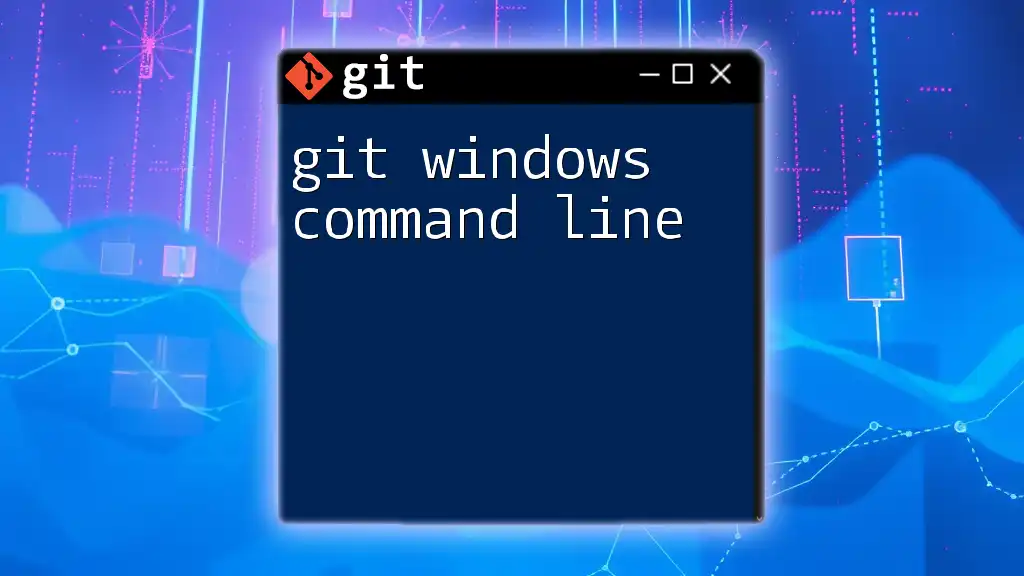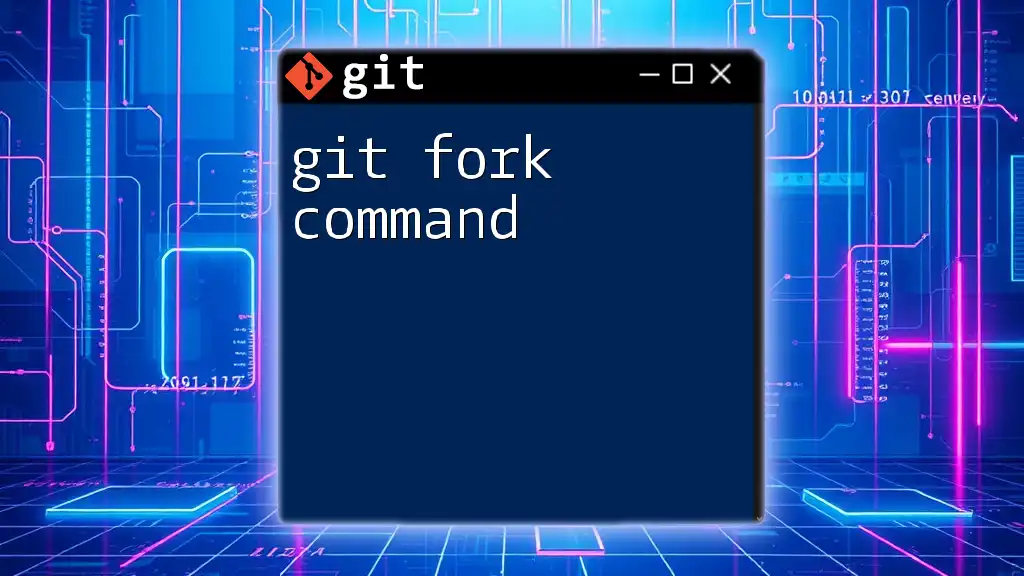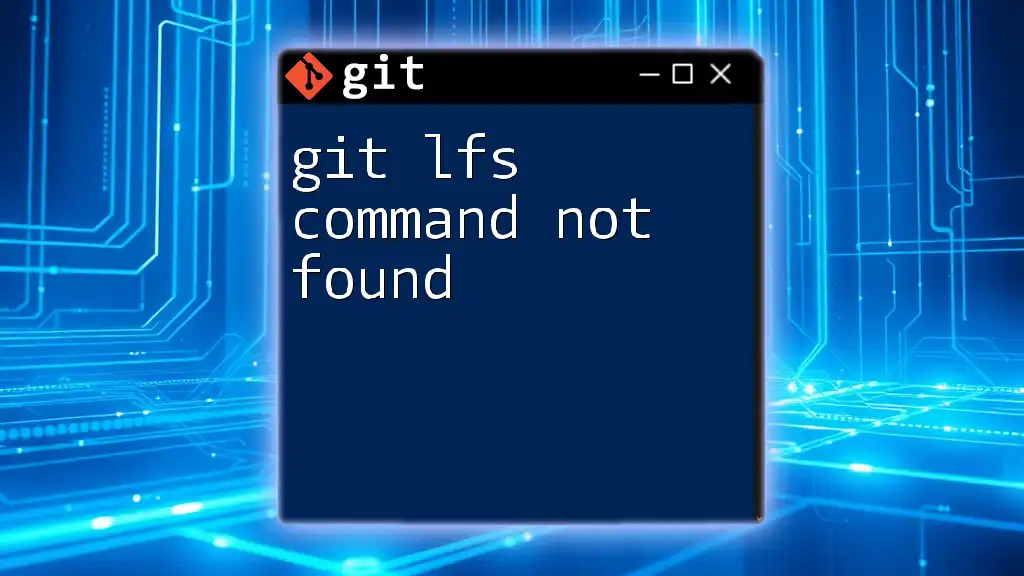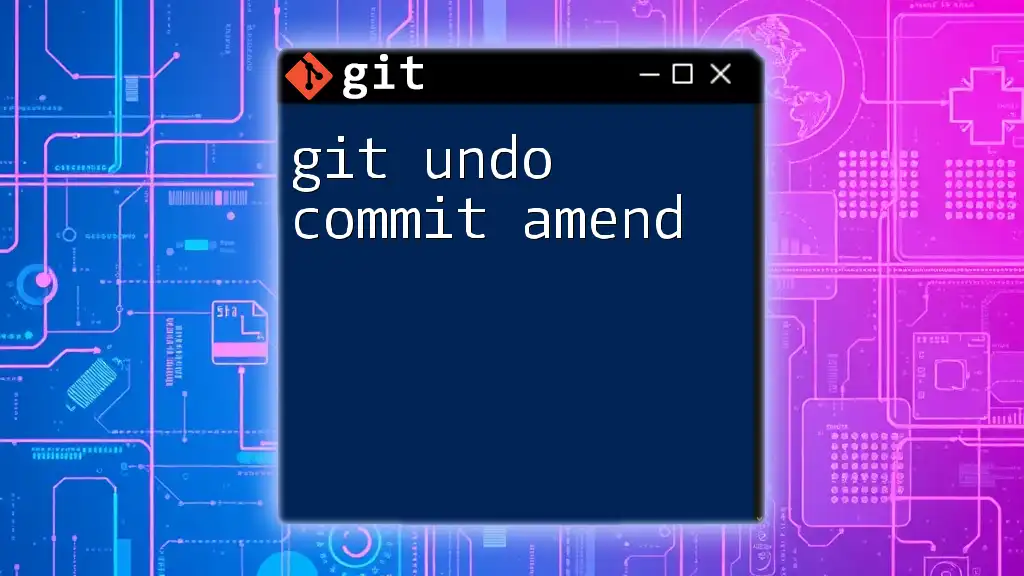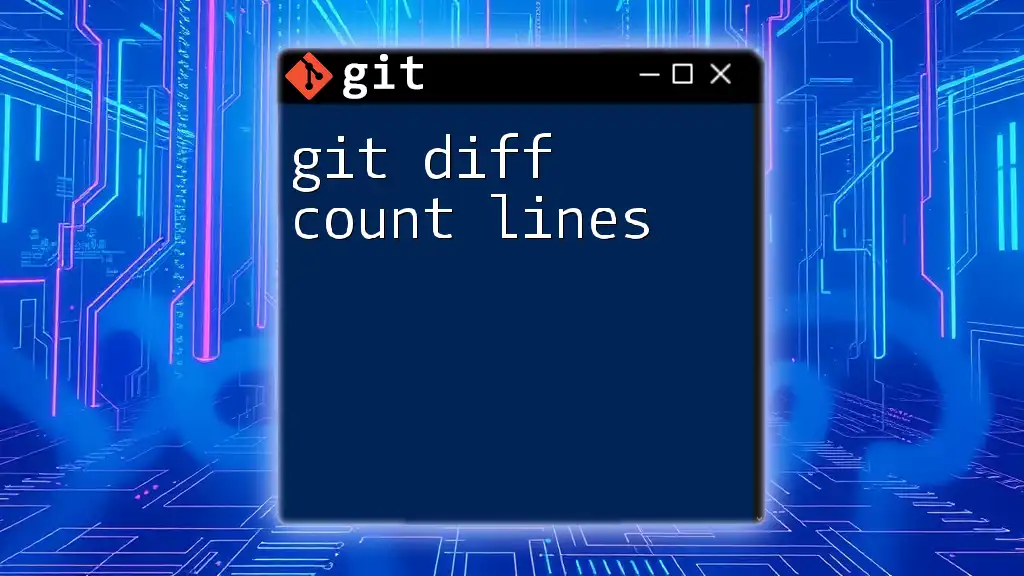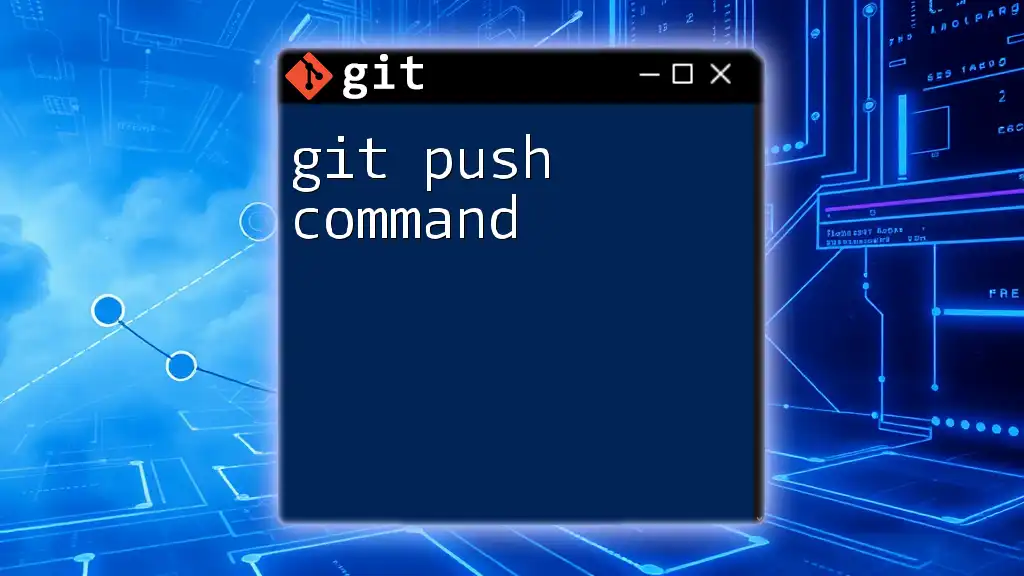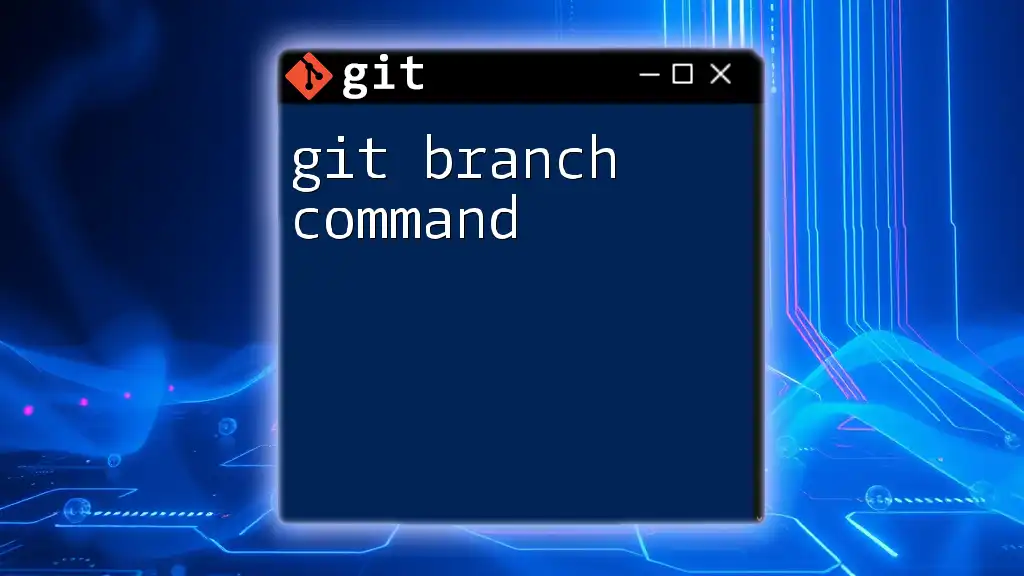The Git Windows command line allows users to execute Git commands directly in the Command Prompt or PowerShell, facilitating version control for their projects.
git init
Setting Up Git on Windows
Installing Git
To get started with the git windows command line, you first need to install Git itself. Start by downloading the installer from the official Git website. Follow the installation prompts, making sure to select options that suit your development environment. One important configuration step is to ensure that the option for "Use Git from the Windows Command Prompt" is selected, allowing you to access Git commands from the native command line interface.
After installation, verify the success of your installation by running the following command in your command prompt:
git --version
This command should return the currently installed version of Git.
Configuring Git
Once installed, you need to configure Git to use your personal information. This is essential because each commit you make will contain this information.
First, set your username and email. These are vital as they help identify who made which changes. Run these commands in the terminal:
git config --global user.name "Your Name"
git config --global user.email "you@example.com"
These settings are applied at the global level, meaning they will apply to any Git repository you work with on your machine. You can also set repository-specific configurations that only apply to individual repositories.
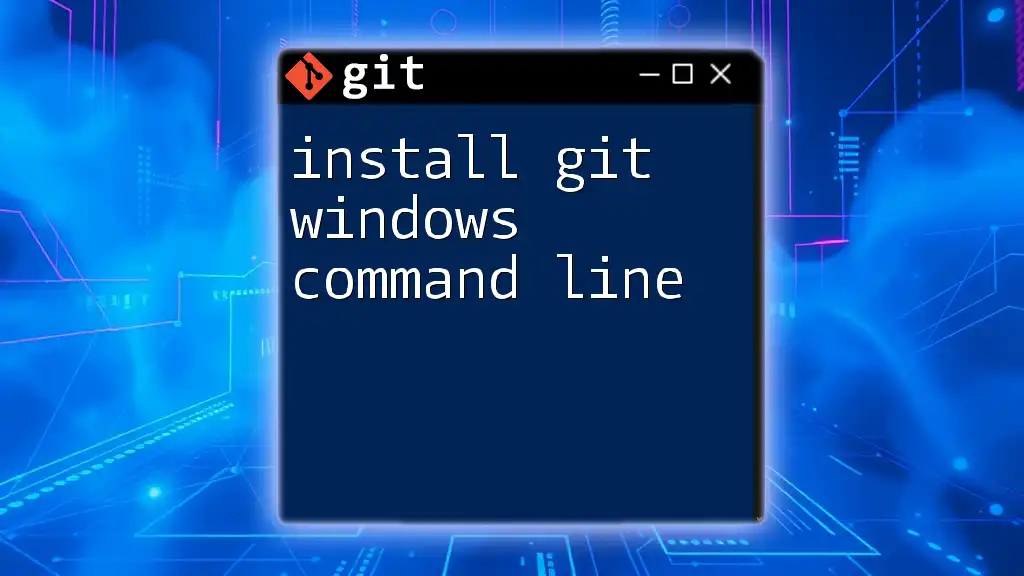
Navigating Git in the Command Line
Basic Command Line Navigation
Before diving deep into Git commands, it's essential to familiarize yourself with basic command line navigation in either Command Prompt (CMD) or PowerShell. Here are a few fundamental commands you should know:
-
`cd` (Change Directory): Navigates to a specified folder.
-
`ls` (List): Displays files and directories in your current location. Note that in Windows, you would typically use `dir` instead.
-
`mkdir` (Make Directory): Creates a new directory.
-
`rmdir` (Remove Directory): Deletes a directory.
For effective management of your projects, understanding these basic navigation commands will help you maneuver your file structure effortlessly.
Understanding Git Repository
Creating a Git Repository
A Git repository is where your project files reside, along with the entire history of changes made. You can create a new repository directly from your command line by navigating to your project folder and running:
git init
This command initializes an empty Git repository in the current directory, creating a `.git` folder that holds all the necessary metadata about your project.
Cloning an Existing Repository
If you want to contribute to an existing project, you can clone a repository from a remote server, such as GitHub. Use the following command:
git clone https://github.com/username/repository.git
Replace the URL with the actual path of the repository you want to clone. This command creates a copy of the repository on your local machine, complete with its history, branches, and files.
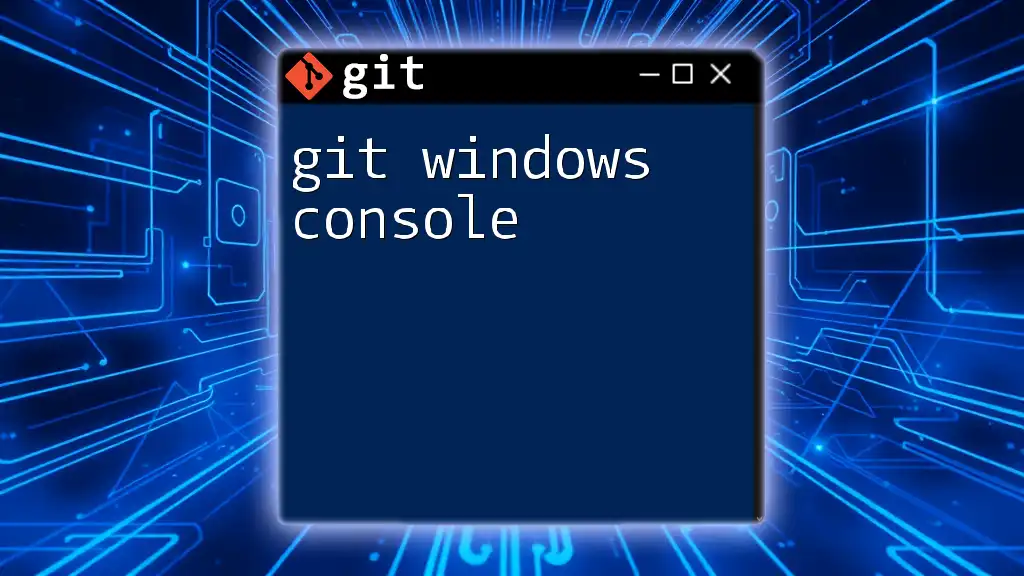
Core Git Commands
Staging Changes
Staging is the process of preparing changes to be committed. Once you've modified files, they need to be added to the staging area so that they can be included in the next commit. This is done using the `git add` command. For example, if you want to stage a specific file:
git add filename.txt
To stage all modified files, you could run:
git add .
Making Your First Commit
Once your changes are staged, it's time to commit them. Committing saves your changes in the repository along with a descriptive message that allows you to track changes effectively. You can commit your changes with:
git commit -m "Your meaningful commit message"
Always strive to make your commit messages concise yet informative, as they serve as a log of the project's history.
Viewing Commit History
To see the history of your commits, you can use the `git log` command. This command opens up a history of all the commits made in the current repository, displaying important information such as the commit ID, author, date, and commit message.
git log
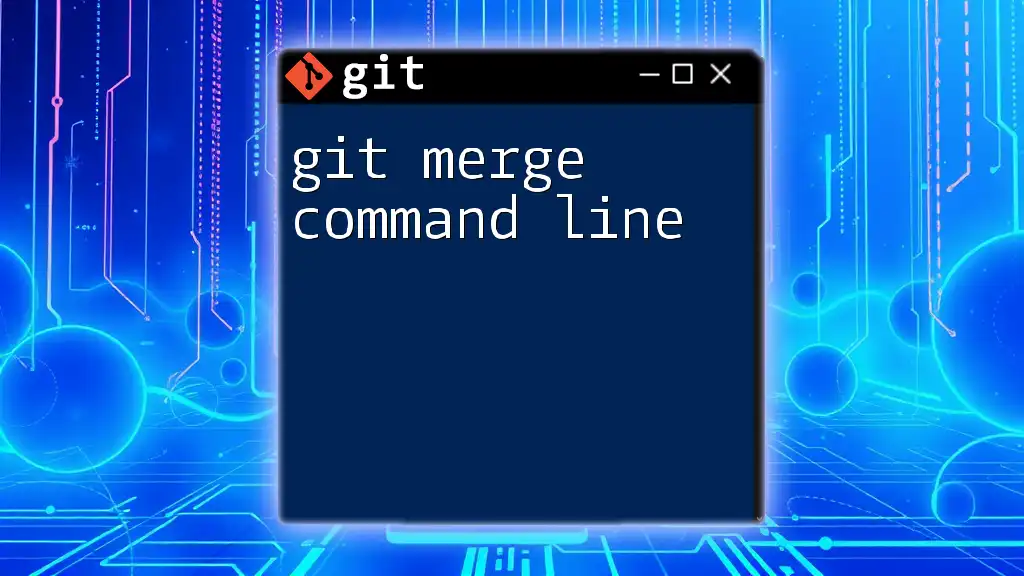
Branching and Merging
Understanding Branches
Branches in Git allow you to work on different versions of your project simultaneously without affecting the main project. When you want to create a new branch, you can do so with:
git branch new-branch
This command will create a new branch off the current branch you are working on.
Switching and Merging Branches
After creating a branch, you need to switch to it to start making changes. Use:
git checkout new-branch
To merge your changes from a feature branch back into the main branch, you first need to switch back to the main branch:
git checkout main
Then you can merge the changes from the feature branch:
git merge new-branch
This command combines the changes from `new-branch` into the current branch, allowing you to integrate features or fixes.
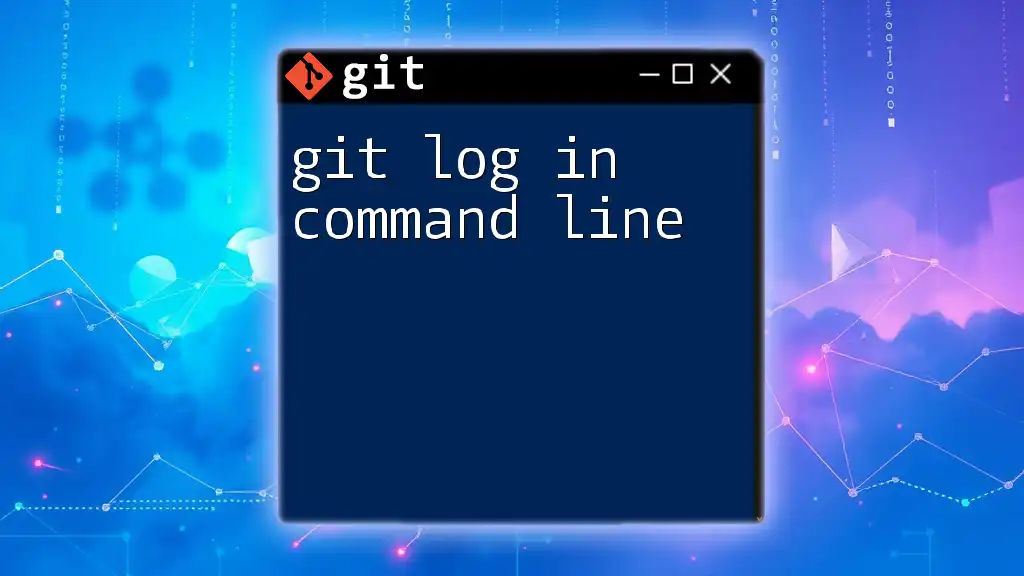
Handling Remotes
Adding Remote Repositories
When collaborating on projects, you'll often need to interact with remote repositories. To add a remote repository, you use the following command:
git remote add origin https://github.com/username/repo.git
The keyword `origin` is typically used as a convention to refer to your main remote repository.
Pushing and Pulling Changes
Once changes are made locally and committed, you may want to push these changes to the remote repository. Use this command to push:
git push origin main
If there are changes in the remote repository that you need to incorporate into your local repository, you can pull those changes using:
git pull origin main
This command fetches and integrates changes from the remote repository into your local branch.
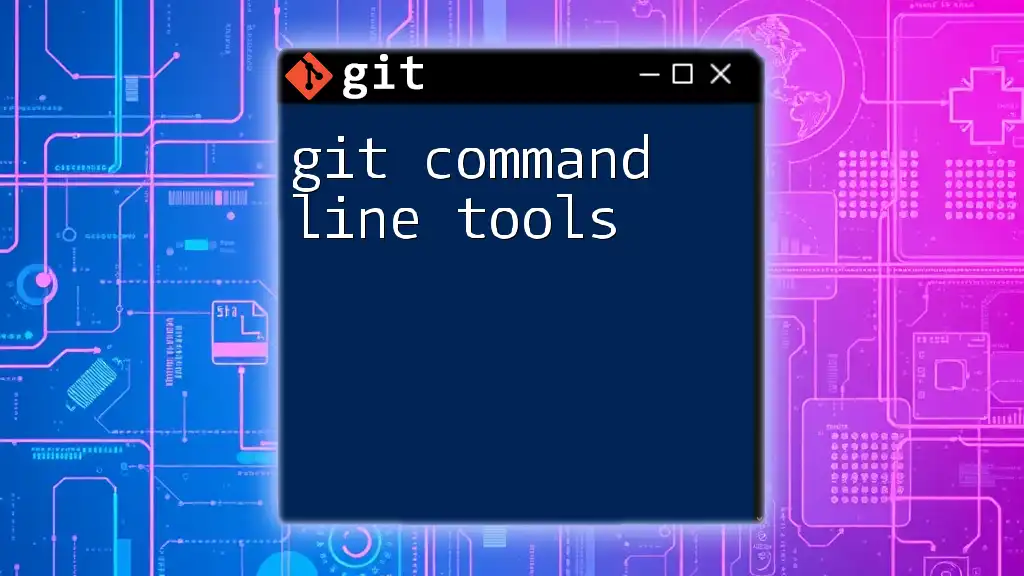
Undoing Changes
Reverting Changes
Mistakes happen. If you've modified a file and want to discard those changes, you can revert it back to its last committed version with:
git checkout -- filename.txt
Resetting and Reverting Commits
To undo commits, you can use the `git reset` command, which has different options: soft and hard. A soft reset keeps your changes staged:
git reset --soft HEAD~1
A hard reset will discard all changes since the last commit:
git reset --hard HEAD~1
These commands need to be used cautiously as they can lead to loss of work if not used correctly.
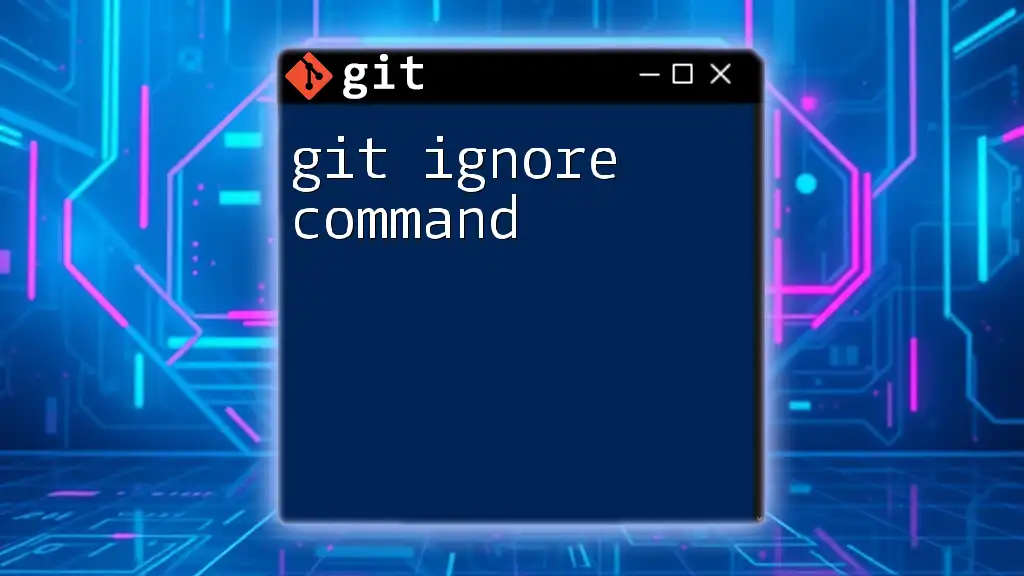
Best Practices for Using Git on Windows
Organizing Your Git Workflow
Maintaining an organized workflow is essential. Utilize branches extensively for features, fixes, or experiments. Always merge back into the main branch once thorough testing is completed. Regularly push your changes to remote repositories to ensure that you have backups of your work.
Writing Meaningful Commit Messages
Commit messages should provide insight into the changes being made. A good structure includes a brief summary, the reason for the changes, and any specific notes worth noting in the future. For example:
Fix: Correct typo in user documentation
- Fixed spelling error in documentation
- Ensured the example works correctly

Conclusion
Mastering the git windows command line is a valuable skill that will enhance your productivity in software development. By following best practices and utilizing core commands, you can effectively manage your projects and collaborate seamlessly with others. Familiarize yourself with these processes, and consider exploring additional resources to deepen your understanding of Git.
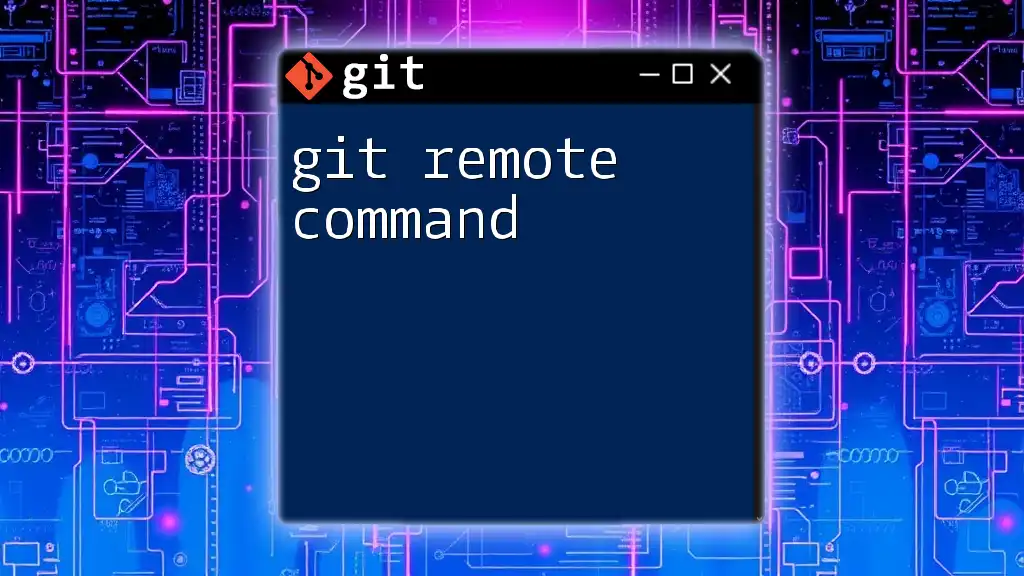
Frequently Asked Questions (FAQs)
Common Issues While Using Git on Windows
As a beginner, you may encounter issues, such as problems with permissions or conflicting merges. Ensure that your Git installation is configured correctly and doesn’t have conflicting tools installed that might interfere with its operation.
When to Use Git GUI vs Command Line
While graphical user interfaces (GUIs) can make some operations easier, using the command line allows for a deeper understanding of Git, quicker execution of commands, and greater flexibility. Balancing both approaches can be beneficial depending on your comfort level and the complexity of tasks at hand.

